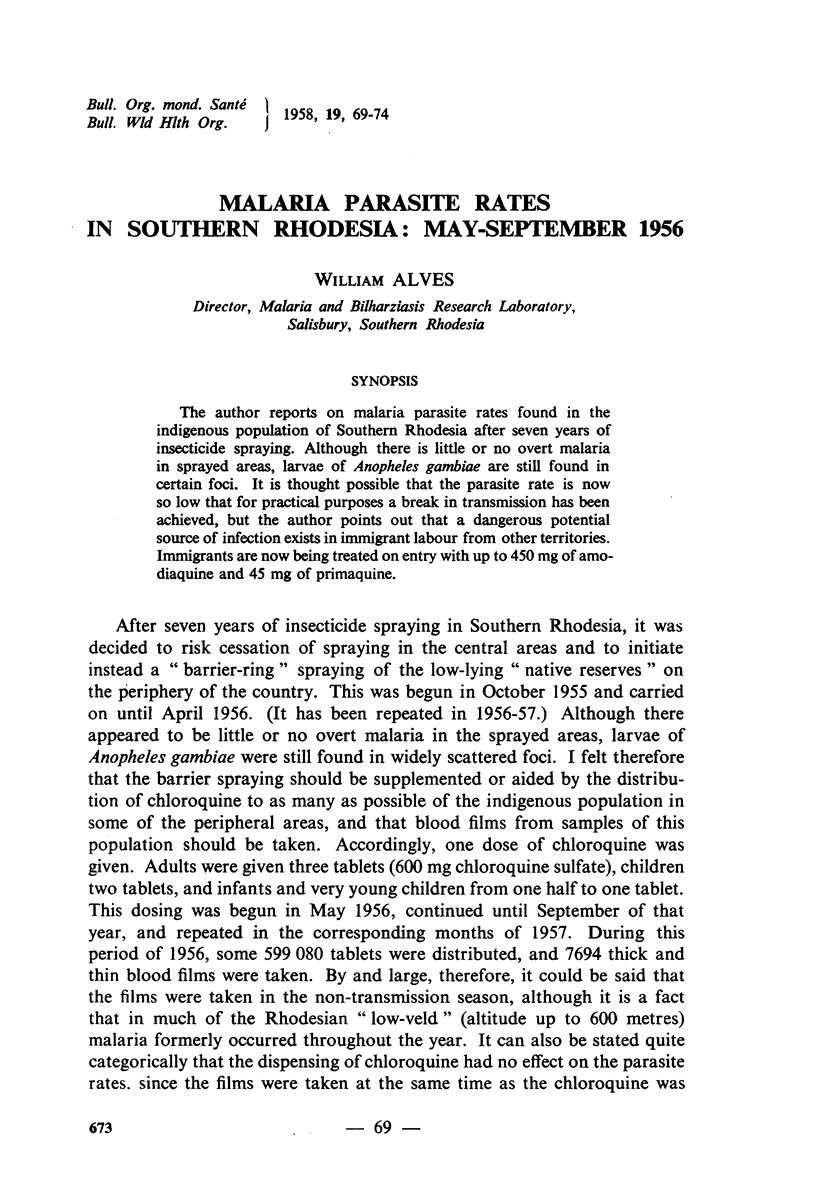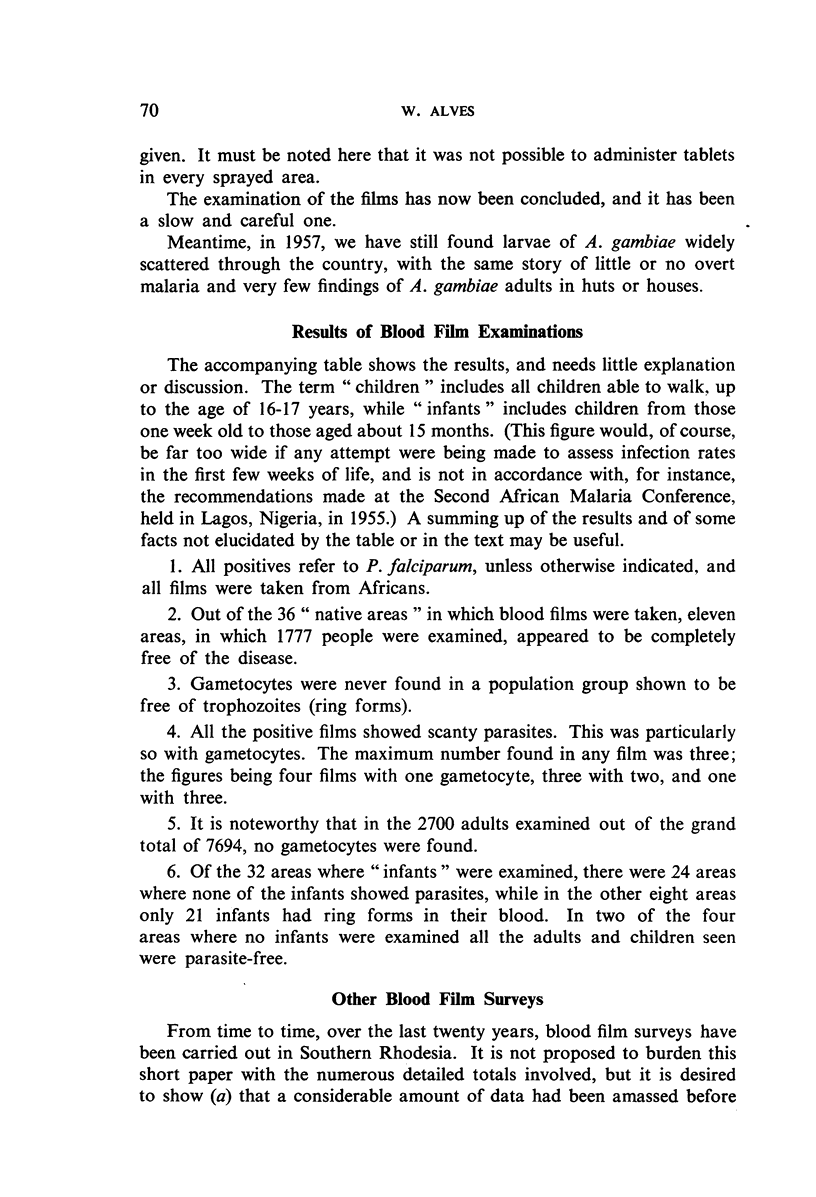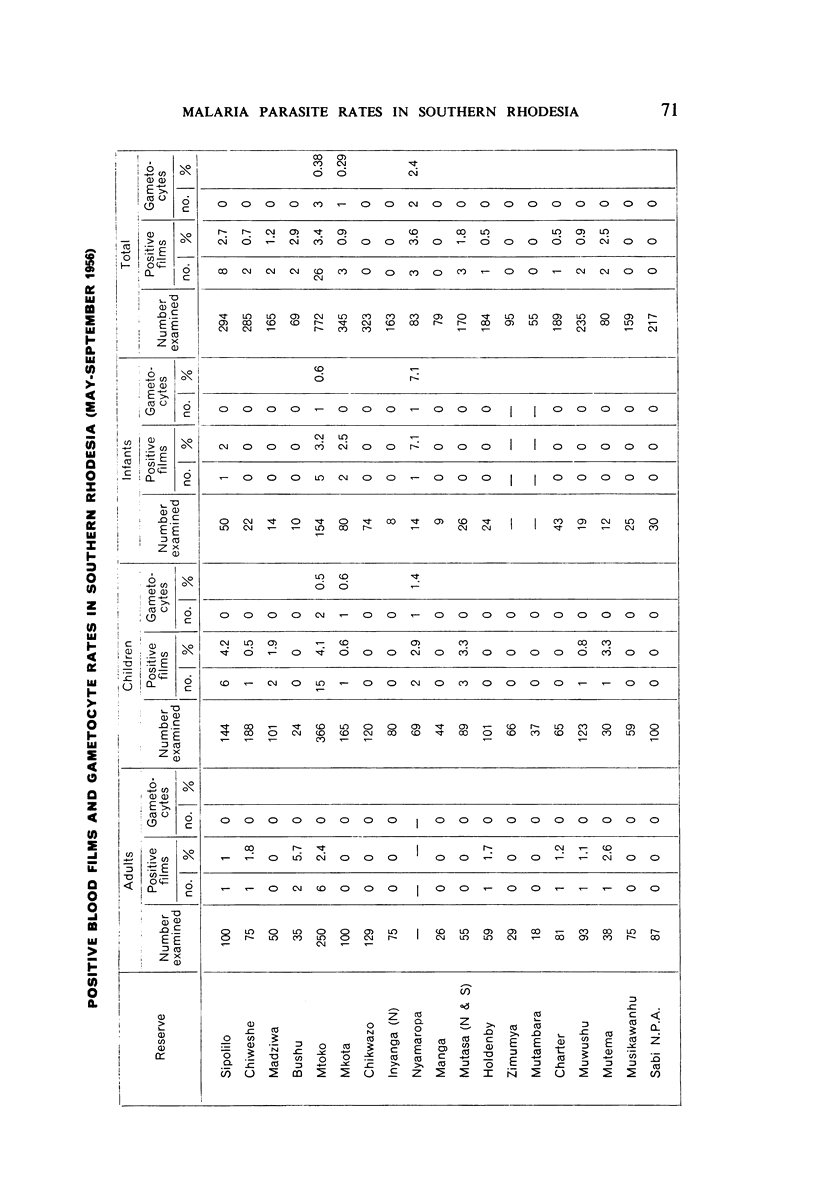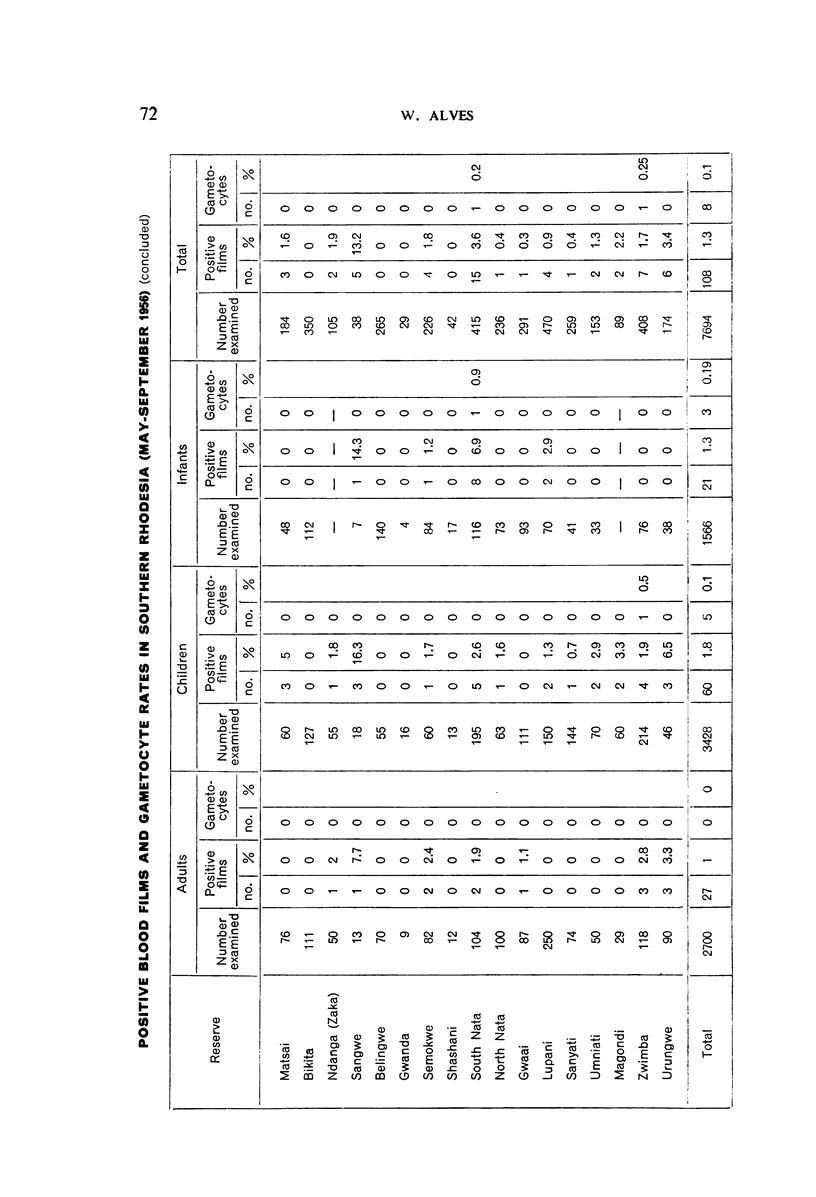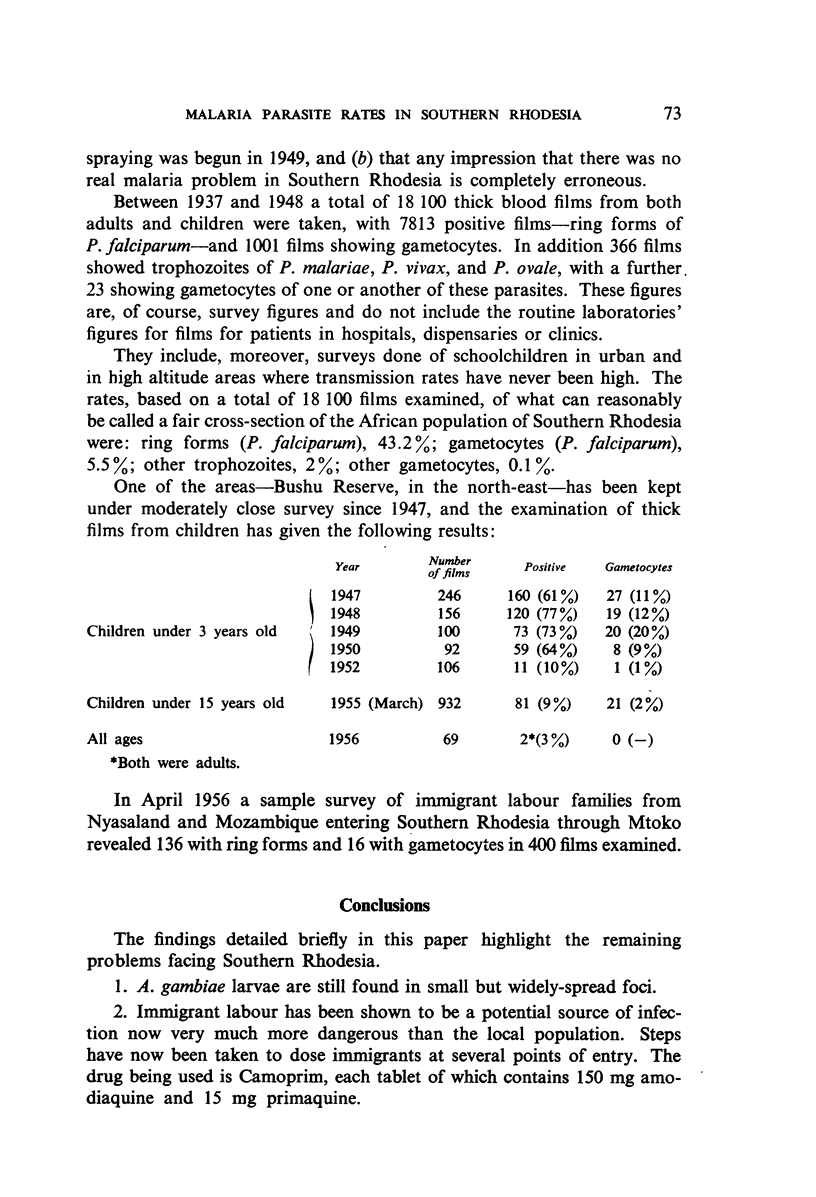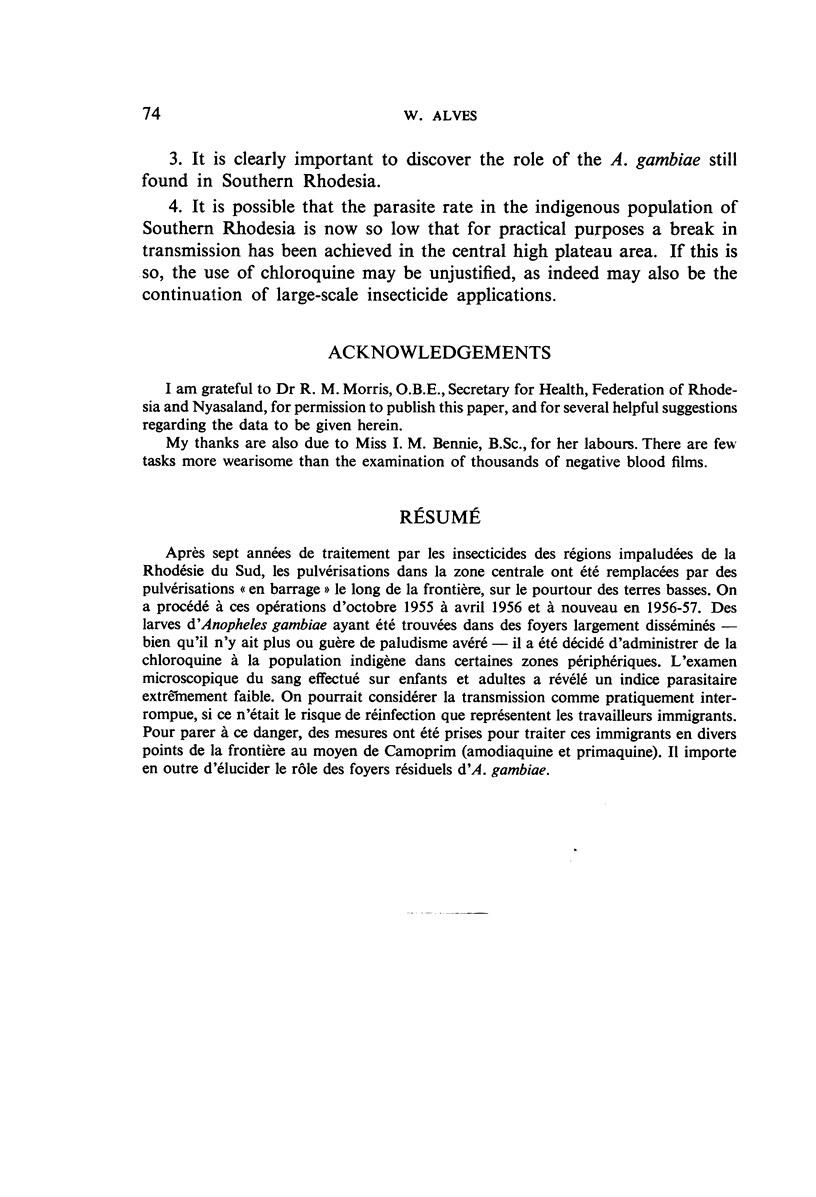Abstract
The author reports on malaria parasite rates found in the indigenous population of Southern Rhodesia after seven years of insecticide spraying. Although there is little or no overt malaria in sprayed areas, larvae of Anopheles gambiae are still found in certain foci. It is thought possible that the parasite rate is now so low that for practical purposes a break in transmission has been achieved, but the author points out that a dangerous potential source of infection exists in immigrant labour from other territories. Immigrants are now being treated on entry with up to 450 mg of amodiaquine and 45 mg of primaquine.
Full text
PDF